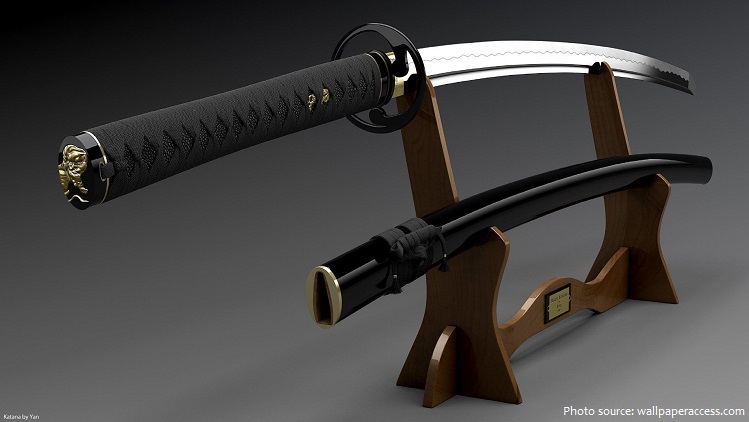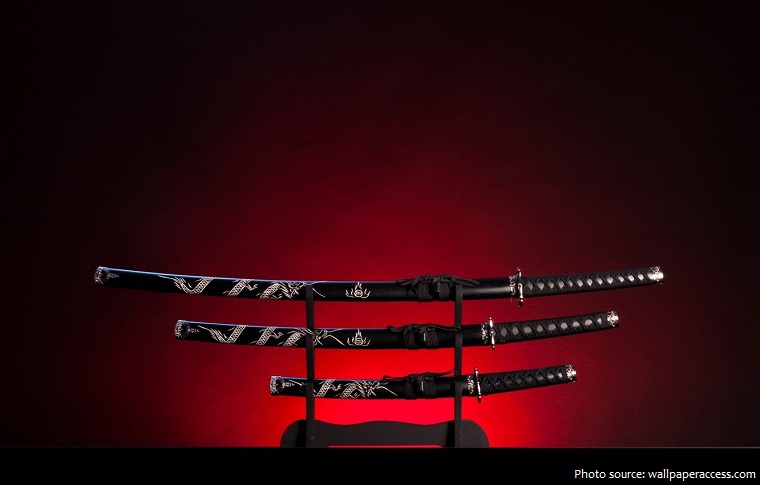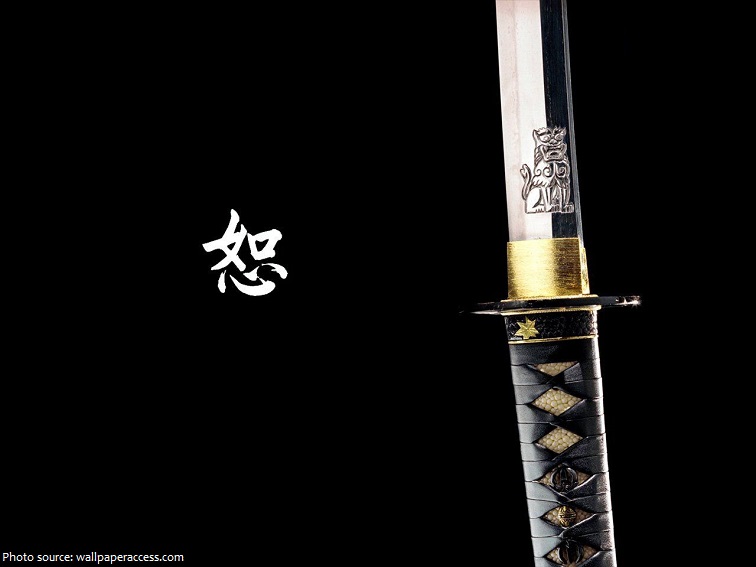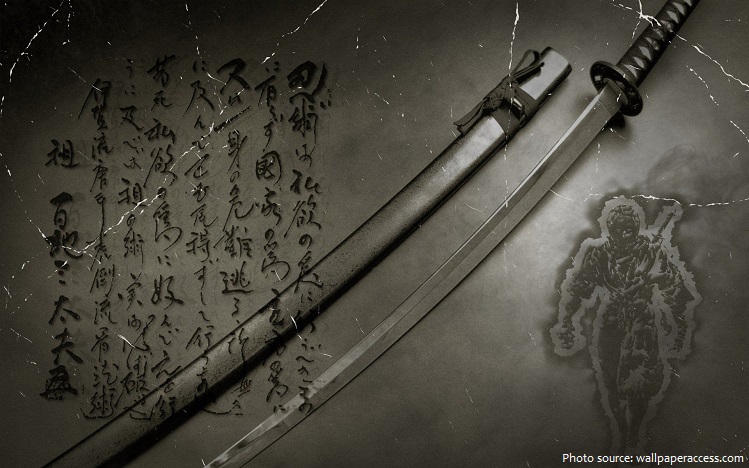
Katana is a generic term for swords forged in the originally developed way in Japan.
It is one of the world’s most popular and widely recognized swords.
Its beautiful shape has symbolic meaning as well as its use as a weapon since ancient times, and many are highly appraised as art objects.
These swords used by Japanese samurai were renowned for the craftsmanship which produced strong yet flexible curved steel blades with a single, super-sharp cutting edge. It has been said that the samurai’s sword was his soul.

The katana was such a crucial part of a samurai’s life that when a young warrior was on the verge of entering this world, the sword he would use as a protector was brought into the delivery room as if to greet the young one. And, when a weathered, old veteran warrior was on his deathbed, ready to cross over into the White Jade Pavilion of the afterlife, his katana was placed at his side, as if to protect him one last time.
There was a tradition of wearing, taking care and taking the katana out of its scabbard. Samurai kept their katana on a special stand for swords, called katana-kake. The blade had to have its point up, just as when wearing the sword – the handle (called the tang) had to be turned to the let. This made katana available for handling any time it was needed.

The katana was not only a weapon of protection but a mercy tool to assist in a ritualistic Japanese suicide called seppuku – sometimes referred to as Harakiri, which was carried out when a warrior brought shame to himself. A kaishakunin, or an appointed second person on duty for the ritual, is typically a samurai on standby who is ready to behead the person performing seppuku. The kaishakunin stands on the left side of the person committing the ritual suicide and draws his sword slowly and silently, raising it with his right hand, waiting for the seppuku to be carried out.
The word “katana” first appears in Japanese in the Nihon Shoki of 720. The term is a compound of kata meaning “one side, one-sided” + na meaning “blade”.

Katana originates from sasuga, a kind of tantō (short sword or knife) used by lower-ranking samurai who fought on foot in the Kamakura period (1185–1333).
The oldest katana in existence today is called Hishizukuri uchigatana, which was forged in the Nanbokuchō period, and was dedicated to Kasuga Shrine later.
The great swordsmiths of Japan were more alchemists than blacksmiths. Requiring a deeply intimate knowledge of chemical metallurgy, the traditional sword making process was anything but straightforward. Dozens of craftsmen would work around the clock for months on end, sometimes longer, to produce a single blade.
Katana were mainly used by the samurai, the military nobility of feudal Japan (1185-1600) up through the Edo period (1603–1868). The increased popularity of the katana among samurai came about because of the changing nature of close-combat warfare. The quicker draw of this sword was well suited to combat where victory depended heavily on fast response times. The katana was worn thrust through a belt-like sash (obi) with the sharpened edge facing up. Ideally, samurai could draw the sword and cut the enemy in a single motion.

The export of katana reached its height during Muromachi period, when at least 200,000 katana were shipped to the Ming dynasty in official trade in an attempt to soak up the production of Japanese weapons and make it harder for pirates in the area to arm. The craft decayed as time progressed and firearms were introduced as a decisive force on the battlefield.
With the end of the Edo period and the beginning of Meiji period, Japan began a rapid process of industrialization and westernization. Regarding the military, the weapons shifted from sword to firearm. The use of the katana in Japanese daily life came to an end at almost the same time with the Haitōrei (sword prohibition) Edict of 1876, which allowed only police and military personnel to carry them. Many of the swordsmiths were required to close their businesses, leading to the near extinction of katana
sworesdsmithing until 1906. At that time, two well-known swordsmiths were appointed as imperial household artists, thus preserving the skills of the swordsmiths, a cultural legacy that has been passed on to the present day.

Today, the art of Japanese cutlery is a direct descendant of Japanese sword making, with many of the same techniques and designs still being used. With authentic, traditional samurai swords fetching astronomical prices (if you can even find one for purchase), owning a quality, Japanese piece of cutlery is the next best thing.
The standard contemporary katana size is around 1 meter (40 inches). The blade length is approx. 60 to 80 cm (23.5 – 31.5 in).

A comprehensive list that defines each part of the iconic blade:
Hamon: The differential line in the hardening of the blade.
Hi: A longitudinal groove on the blade to make it lighter. It also absorbs and distributes shock stress, preventing the blade from being damaged.
Habaki: A wedge-shaped metal collar used to keep the blade from falling out of the wooden scabbard.
Kaeshizuno: A hook used to lock the katana’s scabbard onto the obi (sash on a kimono).
Kissaki: The tip of the katana.
Koiguchi: The opening of the katana’s scabbard.
Menuki: The ornaments found on the hilt of the sword.
Nagasa: The length of the sword.
Same-kawa: Liner for the handle of the blade.
Saya: The wooden scabbard for the sword.
Sori: The curvature of the blade.
Tsuba: A guard or buckler used for decoration.
Tsuka: The handle of the blade, which is made long enough two hands to grip.
Tsuka-ito: The stringing of the handle.
Wari-bashi: A pocket to store metal chopsticks.
The official term for katana in Japan is uchigatana and the term katana often refers to single-edged swords from around the world.
In 1992, Dr. Walter Ames Compton sold 1100 swords from his collection for a total of $8 million in just one day. The most precious one was a Kamakura from the 13th century which he sold to an anonymous collector for the impressive sum of $418,000, making it the most expensive katana ever sold.
